Do you have an English Heritage membership? If so, you may find yourself spoilt for choice when deciding where to go. With more than 400 monuments, buildings, and sites around England, English Heritage promises a fun day out wherever you happen to be. To help you pick a destination, they have shared their top ten sites for a great day with the family. Read to the bottom to learn about a discounted English Heritage membership offer. (Note that this article contains affiliate links. If you click on them and make a purchase, there is no extra cost to you, but I may earn a few pennies.)
Dover Castle, Kent
Growing up in Ramsgate, Dover Castle was a favourite destination for school trips when I was younger. It remains a fun place to go when I’m back in Kent. Set atop the famed white cliffs and with France clear on the horizon across the Channel, the location has played a key role in Britain’s defense through the centuries, from its use as a Roman outpost in 43 AD to its role as a military HQ during the Second World War. Today, visitors can glimpse into its lengthy and varied history.
The oldest building within the grounds is the Roman lighthouse (pharos), dating back to that first arrival. Only three Roman lighthouses remain anywhere in the world. This example also happens to be the most complete Roman building still standing in England. Immediately next to it is St Mary’s in Castro Church, a restored version of the Saxon Church first erected in 1000 AD. Sunday services are still held and visitors are reminded to be respectful if a service is taking place.
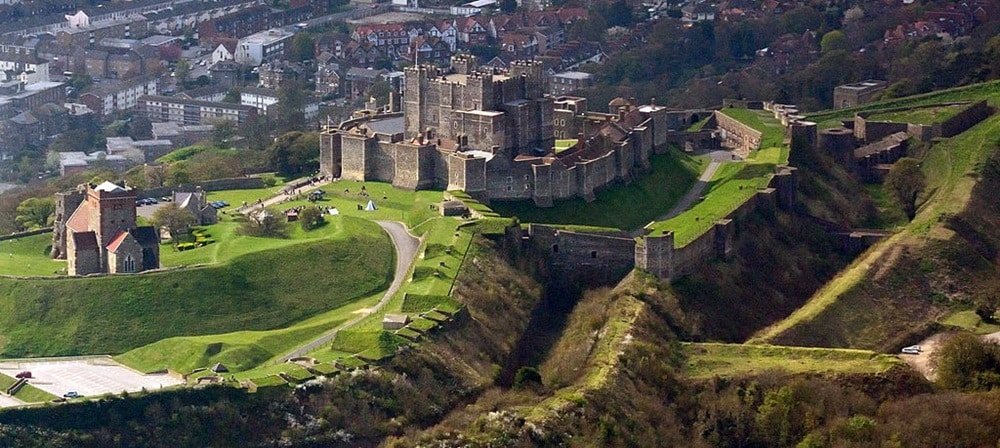
Then of course there is the actual castle. Construction of the current castle began during the reign of Henry II (1154-1189), although it is likely that William the Conqueror built some sort of fortification here after 1066. Henry was determined to make this fortress one of the most impressive in Europe. he wanted it to strike fear into anyone who attempted to invade from the continent. Additional outer walls were added in the 13th century during the First Barons’ War.
Later during the Tudor era, this would be Anne of Cleves’ first stop when she arrived on English shores. Elizabeth I later stayed here. The castle would play an important role later during the Napoleonic Wars. Underground barracks were built to house soldiers stationed there in the event of a French invasion. More recently, a series of elaborate tunnels in the cliffs served as an Army and Navy HQ during World War II. It played a key role during the planning of Operation Dynamo, the codename for the Dunkirk evacuations.
Today, visitors to Dover can explore the Castle as it would have been in medieval times, climb to the top of the keep to admire the view, and tour the wartime tunnels. There are several new attractions, including an immersive escape room set within the war bunker, and a Dover Castle Under Siege exhibition. You can even stay in one of the cottages within the Castle grounds. Guests can sleep in either the 13th-century Peverell’s Tower or the Sergeant Major’s House. Family fun this summer, at Dover Castle and at other English Heritage properties, also includes a series of games inspired by TV’s Taskmaster.
Kenilworth Castle and Elizabethan Gardens, Warwickshire
Experience a taste of Elizabethan England at Kenilworth Castle, once the home of Robert Dudley, Elizabeth 1’s long-time friend and rumoured lover. Once ranked among England’s most magnificent castles, Kenilworth later achieved renewed fame thanks to Walter Scott’s romance novel by the same name.
Like so many other castles on this list, Kenilworth started out as a Norman garrison in the 12th century. King John expanded it before his death. John’s successor Henry III gifted it to his sister and her husband, Simon de Montfort, the Earl of Leicester. De Montfort and the King later found themselves on opposing sides during the civil war of the 1260s, and De Montfort’s son held the castle through a six-month siege before surrendering to the king. The lands and associated titles were then given to Henry’s son, Edmund.
A century of various family quarrels and rebellions followed, during which Kenilworth changed hands several times until it passed to John of Gaunt. He and his wife carried out extensive improvements and remodelling over the next few decades. Kenilworth became part of the Crown Estate during the reign of Henry IV, Gaunt’s son, and it was a favourite hunting grounds among the Lancastrian and Tudor monarchs. Elizabeth I visited several times during her progresses, no doubt partly because she had gifted it to Robert Dudley. Dudley made many changes to impress her, including the construction of a tower and garden to be used only by Elizabeth.

After the Civil War, much of the estate was stripped and parcelled out. What was left became a farming estate. The towers were left to fall into ruin. In the early 2000s, English Heritage carried out significant repairs. They restored the Elizabethan garden and installed walkways allowing visitors to climb to the top of the tower walls.
This summer, an exhibition of artwork explores the close relationship between Elizabeth and Robert Dudley. The August Bank Holiday Weekend will host a Knight’s Tournament, and music concerts will take place on Sundays in September.
Whitby Abbey, North Yorkshire
Of all the towns in England to visit, Whitby is a personal favourite. The stunning Whitby Abbey offers plenty of photo opportunities at any time of year, although the illuminations at Halloween are particularly spectacular.

The first monastery was established in 657 and it quickly became an important religious site. Although the monastery was abandoned in the 9th century, its residents fleeing the increasingly frequent Viking raids, a new Benedictine community set up a religious base there in 1078. The monks remained until Henry VIII ordered it closed during his Dissolution of the Monasteries.
The lands were sold to the Cholmley family, and a grand house was built from the abbot’s residence. Meanwhile, the Abbey fell into ruin. Yet, those impressive Gothic ruins gave Whitby a new lease of life when they inspired Bram Stoker to write his masterpiece, Dracula. In 1920, ownership of the property was passed to the government and, later, to English Heritage.
This summer, the family can enjoy a series of Dracula-inspired events at the Abbey, including live plays and the Count’s Treasure Hunt. There will also be a week of Halloween events for the children during the autumn half-term holiday.
Battle Abbey and 1066 Country, East Sussex
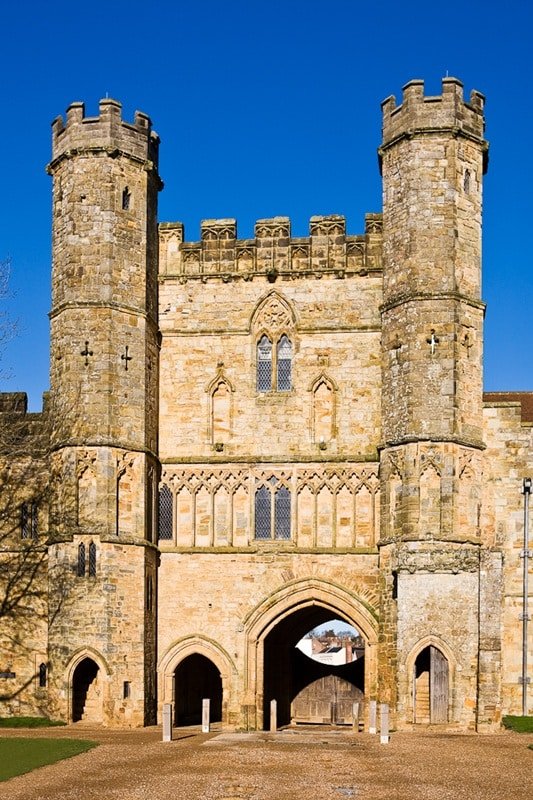
Some years ago, on a winter’s day that would begin with an early morning visit to Stonehenge, Woodhenge, and Old Sarum, and would end at the tip of the Kent coast in Ramsgate, we found ourselves driving through East Sussex and saw a sign for Battle Abbey. It was later in the afternoon. But we had our English Heritage passes and so decided to add another stop to our trip. An audio tour guided us around the battlefield where, in 1066, William the Conqueror’s armies defeated King Harold in the Battle of Hastings. It was an incredibly peaceful day, a far cry from the chaos and noise of battle all those centuries ago.
The Battle of Hastings was a defining moment in English history. After Harold’s defeat, the Norman invaders took over rule of the country. William reportedly built Battle Abbey as a form of penance on the very spot where Harold met his death. It remained a Benedictine monastery until it was ordered closed by Henry VIII in 1538. Soon after, the abbey became a luxurious country house, owned by the Webster family.
I’ve mentioned the audio guide, which is a wonderful way to learn more as you wander the battlefield. Don’t forget to also explore the abbey ruins, as well as the gardens. An exhibition in the Gate House details some key moments from the Abbey’s history, while the Visitor’s Centre is filled with interactive displays. For even more to see and do, catch the falconry display the first weekend of August and come back in October to see a reenactment of the famous battle.
Tintagel Castle, Cornwall
Tintagel Castle is where history and legend meet. This magical castle was where some of the first Cornish rulers were based after the Romans had left Britain. Later, it was proclaimed to be where King Arthur was conceived and that connection to Arthurian legend has remained strong ever since. Today, it continues to enchant visitors with its rugged landscape.
Possibly unlike any other castle in England, Tintagel stands half on the mainland and half on a jagged headland. Little is known about its earliest origins. Archaeological excavations have shown that a thriving community was here between the 5th and 7th centuries. In the 12th century, historian and chronicler Geoffrey of Monmouth wrote that Arthur was conceived here thanks to the help of the wizard Merlin. Possibly inspired by this story, the Earl of Cornwall, brother of King Henry III decided to build a castle here, despite the location’s lack of strategic value. It seems that the castle was abandoned rather soon after completion, and it quickly fell into ruin. The spell had already been cast, however, and Tintagel would forever be associated with Arthur and Merlin.
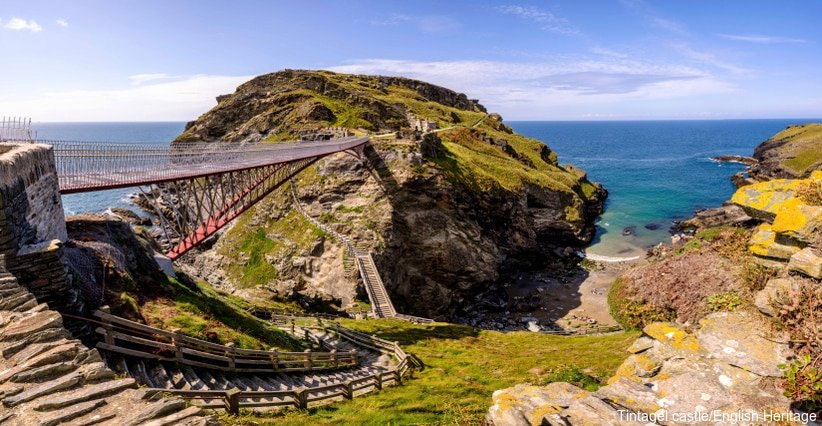
In 2019, a stunning new footbridge linked the two parts of the castle, although it may not be suited to the faint of heart. Unlike many of the other castles listed here, entry to Tintagel Castle is via timed ticket and a one-way route is designed for everyone’s safety given this potentially dangerous part of the coast. Once across the bridge, you can explore the ruins of the great hall, see parts of the medieval settlement, and visit Gallos, the giant statue inspired by Arthur. Another legend also features here. The garden on the island was inspired by the tale of Tristan and Isolde, and a series of stepping stones tells of their doomed love. When the tide is out, you can also go down to the beach to enter Merlin’s Cave. Remember to be aware of tide times if you choose to visit the beach.
Pendennis Castle, Cornwall
On the other side of the Cornish coast, about an hour from Tintagel by car, is Pendennis Castle. This has a very different, and more practical history than its northern neighbour, with connections to the Tudors and the Second World War. Fellow English Heritage site St Mawes Castle is nearby and many visitors combine trips to the two. Unlike Tintagel, Pendennis was built specifically as a fortress. Henry VIII, worried about attempts at invasion from the continent, built a number of these round fortresses all along the southern coastline, providing a 360-degree view so that any enemy could be seen immediately. For the next 400 years, it provided protection over the port of Falmouth. During the English Civil War, 800 Royalists held the fortress for five months before surrendering. Later, during the Napoleonic Wars, served as a supply base. Its hidden guns provided coastal defense in the First and Second World Wars.
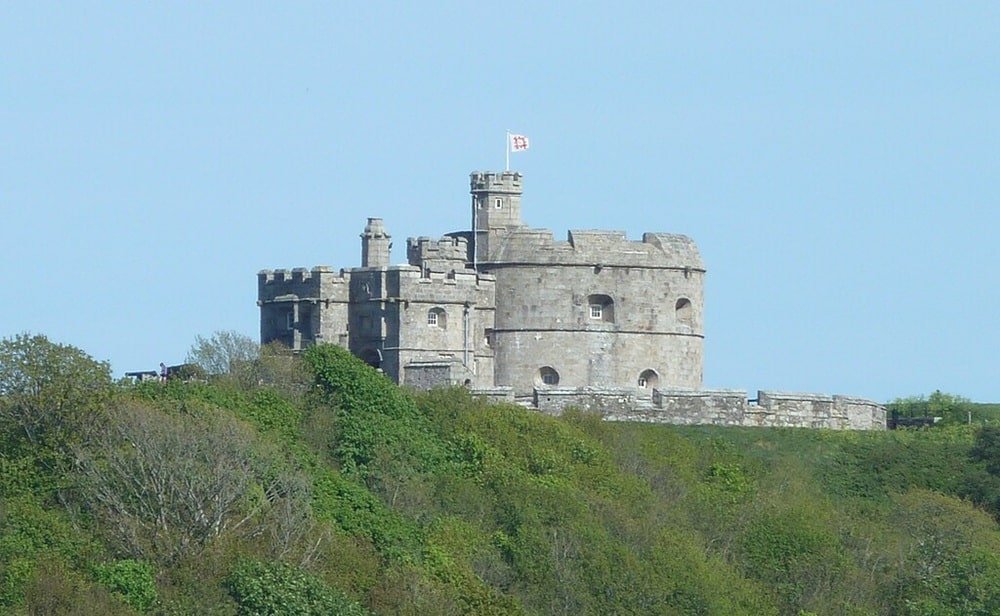
In fact, the guns at Pendennis are among its major attractions. Visitors can see replica Tudor weaponry, Edwardian torpedo-fighting guns, and wartime anti-aircraft guns. Its large open green spaces are ideal for family picnics, with room for children to run and play, not to mention incredible sea views. Who knows what ships or marine life you might catch a glimpse of? Between August 5 and 7, you can also enjoy some Tudor-style jousting in the grounds, a nod to Henry VIII, who was a keen jouster in his youth.
Carisbrooke Castle, Isle of Wight
The Isle of Wight is a popular holiday destination for families, so if you are visiting this year, be sure to include Carisbrooke Castle on your list of places to go. Its extensive history ranges from Vikings to donkeys!
Carisbrooke stands on the northern coastline of the Isle of Wight. For more than 1000 years it has been a strategic defensive post along this part of the channel. Some suspect it may have been used back in Roman times, although archaeologists have been unable to find conclusive evidence of this. They have, however, uncovered graves from a 6th-century Anglo-Saxon settlement. This leads them to believe the site was originally a fort for Anglo-Saxons to defend against Viking attacks. After 1066, the Normans converted it to a castle, and additional expansions were added during the following centuries.
Carisbrooke was on the decline until Elizabeth I made her cousin captain of the Isle of Wight in 1583. He set about restoring parts of the castle and added more living space and extra defenses (should the Spanish Armada try to attack). Later royal connections include Charles I, held here as a prisoner during the Civil War, and Victoria’s daughter Princess Beatrice who modernised Carisbrooke to be her summer residence.
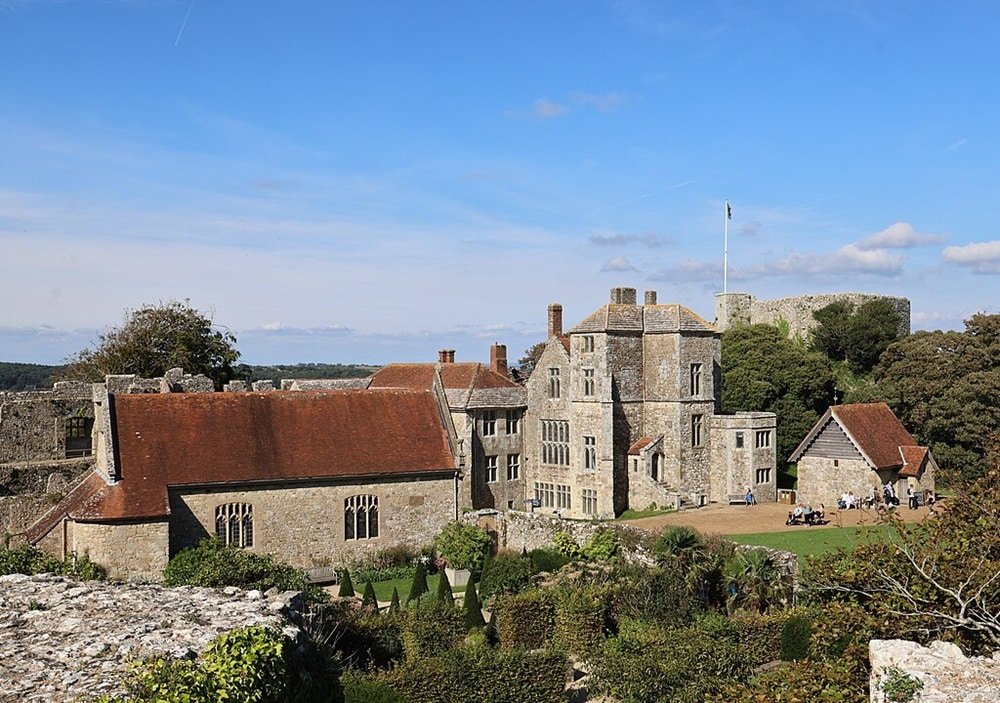
There are extensive gardens to explore, as well as exhibitions within the castle. But what about the donkeys? These beautiful creatures have been in residence for hundreds of years and were first used to draw water in the well-house. Watch them recreate this task at the 16th-century water wheel, and watch a video narrating their history at Carisbrooke. The current stable of donkeys, consisting of Jack, Jill, Juno, Jingles, Jester, and Jigsaw, is always popular with younger visitors.
Wrest Park, Bedfordshire
If you’re looking for a change from the usual castle for a family day out, consider Wrest Park in Bedfordshire. The 19th-century house was built to mimic a French-style chateau, but it is the gardens at Wrest that are truly spectacular, as one of the few remaining examples of a formal 18th-century garden.
The estate at Wrest Park was home to the influential De Grey family for more than 600 years. Edmund Grey was Lord Treasurer to Edward IV and was also given the title Earl of Kent. Several centuries later, the 11th Earl first laid out the formal gardens and a canal known as Long Water. His son then laid out a huge formal woodland garden, edged by canals and adorned with elegant statues. Some of the leading landscape designers of the day were involved in the garden’s creation. In 1758, Capability Brown was hired to make further improvements. During this time, a temple and bath house were added. By 1833, the gardens may have been magnificent, but the old medieval house was faring less well. Rather than restore it, the decision was made to demolish it and rebuild a few hundred feet away. Thus, the new French-style house was built, alongside a new walled garden.
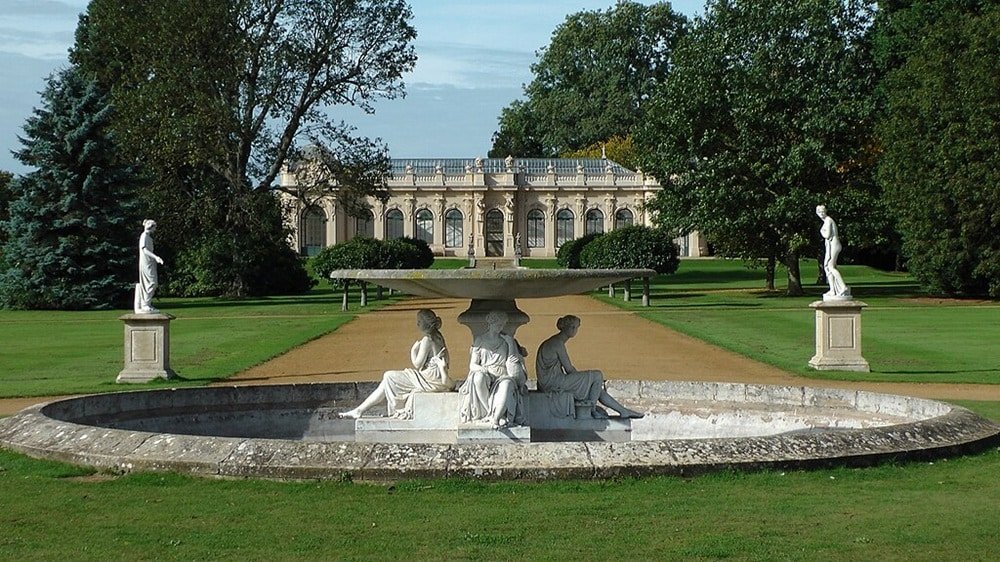
In the 20th century, Wrest House served as a residence for the American Ambassador, as a military hospital and convalescent home for soldiers in the First World War, and then the home of the National Institute of Agriculture. English Heritage took over in 2006 and has since been working to restore it to its pre-1917 glory. Browse the gardens, either by yourself or on a guided tour, view the archaeological collections, and take part in some forest bathing.
Framlingham Castle, Suffolk
Framlingham Castle lies in the heart of the Suffolk countryside and can be reached by car, bus, or electric minibus from nearby Wickham Market train station. Perhaps one of England’s less well-known castles now, it was once a magnificent Norman estate.
Roger Bigod, Earl of Norfolk, ordered Framlingham’s construction in the 12th century, and for more than 400 years, it was home to the powerful Norfolk family. Even from its earliest days, it had a colourful history. In 2016, King John laid siege to it after Bigod and a number of other nobles refused John’s high taxes. Those in the castle surrendered after just a few days and Framlingham was later returned to the Bigods. In 1483, ownership passed via the Brotherton family to the powerful Howard family, who carried out a number of repairs. After Thomas Howard, uncle of both Anne Boleyn and Catherine Howard, fell out of grace with King Henry VIII, Framlingham was given to Mary Tudor, Henry’s eldest daughter. It was here that she was named Queen in 1553. When she took the throne, she returned the castle to the Howard family.
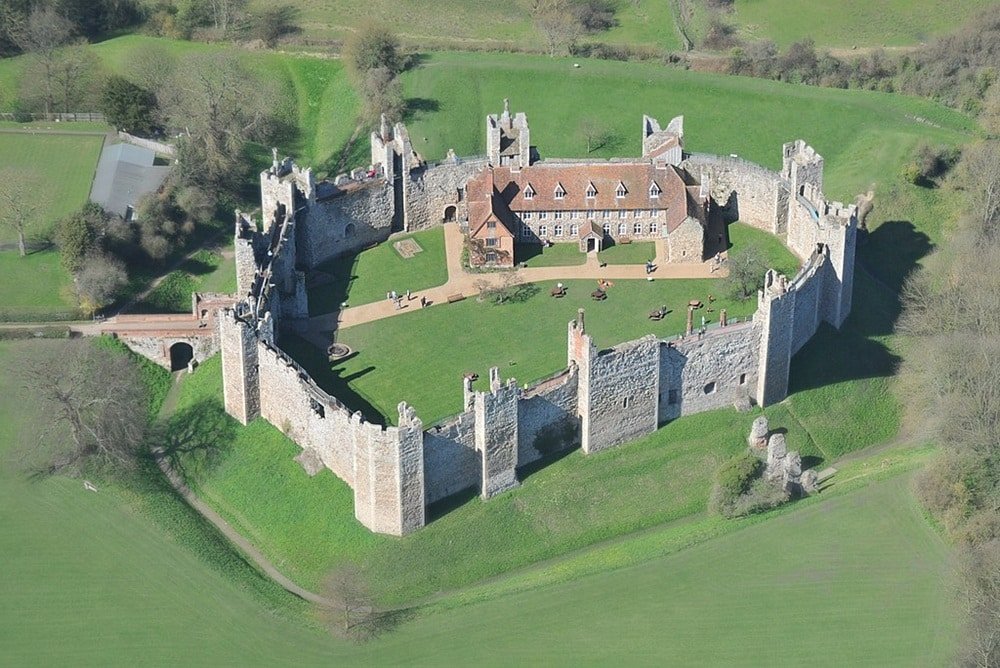
The castle later became a workhouse for the poor, and then a parish hall, before being passed to state guardianship in 1913. English Heritage took over the property in 1984. Today visitors can trace the footsteps of Queen Mary and then see how the poverty-stricken lived a very different life to the Tudor princess in the workhouse. A walk along the castle walls offers excellent views of the castle grounds and the surrounding region. Children can also enjoy the “Hats of Ages” where they can try on everything from a Norman soldier’s helmet to a workhouse resident’s cap. Step back in time to the 13th century at the Knight’s Tournament, taking place over the Bank Holiday weekend in August. You’ll be able to watch jousting, sword fights, and other feats of strength as four knights vie to defeat their opponents.
Audley End House and Gardens, Essex
Last, but by no means least, we have Audley End House and Gardens, situated just outside Saffron Walden in Essex. English Heritage bills it as “the best place in England to discover how a great house worked in the past”.
The house is impressive as you first see it, but remarkably, it was once three times larger! In the early 17th century, Thomas Howard (part of the same Howard family who owned Framlingham) expanded his grandfather’s house to resemble a royal palace. Charles II bought it briefly but later sold it back to the Howards, who decided that it was a little too large and reduced its size. Capability Brown laid out the gardens, and in the 1820s, then owner Richard Neville set about restoring it to its former Jacobean style, which is much how it remains today.
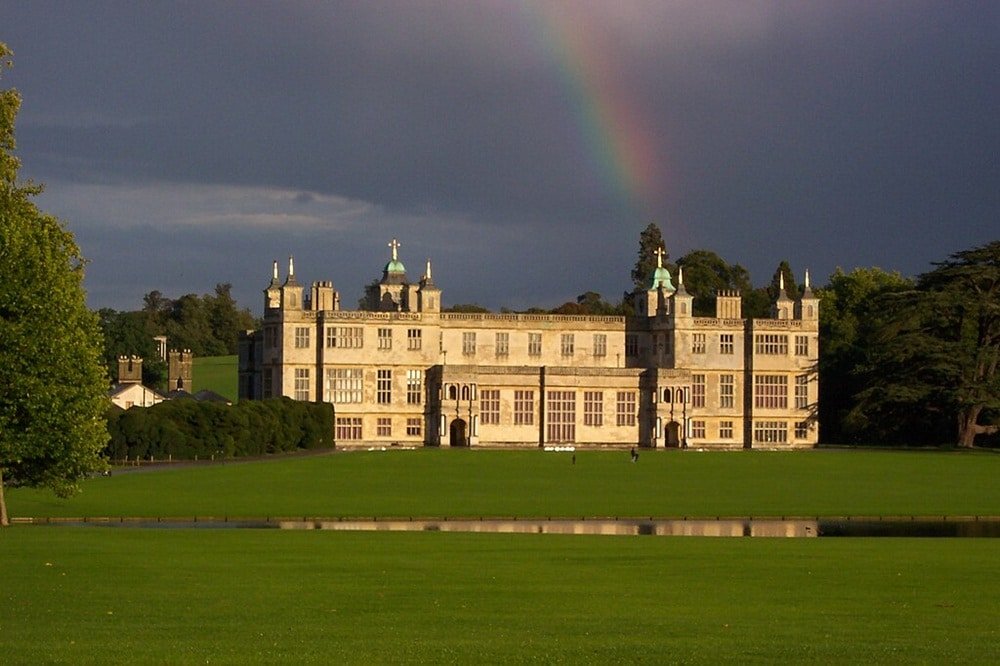
Audley End House is still richly furnished, and visitors can wander through its many rooms, including the Gothic chapel, the great hall, and the bedrooms, including one that was designed specifically for use by a monarch should they decide to visit. In the 1880s Service Wing, you can get a taste of life below the stairs, seeing where the servants would have lived and worked. The Nursery Wing has plenty of room for children to run and play, as per its original intent. And when the children tire of playing indoors, there are acres of grounds and parkland to explore. They can also have a go at being a Victorian stable hand. Summer events include a pop-up market and live music events. The BBC Gardeners’ World Autumn Fair will take place the last weekend of August.
A Special Offer on English Heritage Membership
From now until the end of August, you can save an extra 25% when you sign up for an English Heritage membership. Simply click on the link on the right of this page and use the code “SUMMER25” to get 25% off an annual membership. Some terms and conditions apply.



